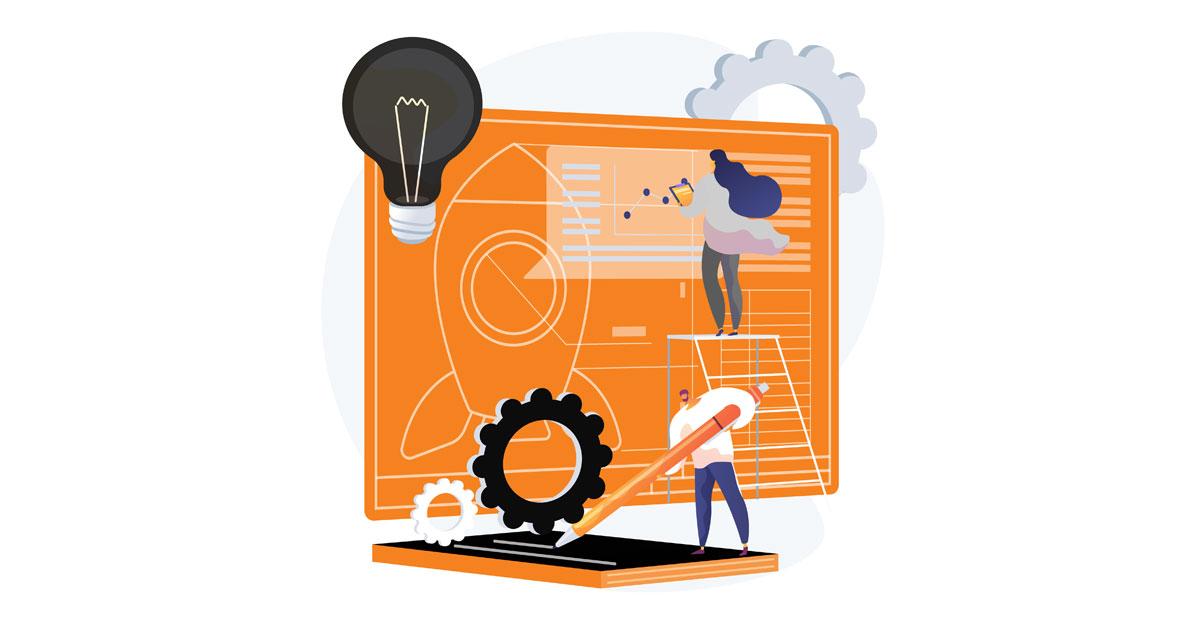Today the scope of software development allows a variety of ways to shape up and craft software. The scope that we are referring to is the progression and methodology behind building a software product.
On that note, three specific phrases have become popular among software developers recently – lean, agile, and scrum. Although the industry has been employing these ideas in reality for a while, still there is some misconception over what these concepts truly entail.
Many individuals learn about agile methodologies with SCRUM or lean, and they end up confused because they wrongly link the three together. Nevertheless, each has diverse functions and tasks to do, so it’s important to comprehend what each one does. So, in this article, we’ll elaborate on these ideas.
What is Agile Development?
Agile is a continual software development strategy for providing requirements progressively rather than in one go only at the ending. The main tenets of this method of software development are teamwork, client cooperation, and adapting to change. Furthermore, the Agile methodology gives a structure where continual improvements may take place across the various phases of the software development process.
Advantages of Agile Development:
1. Excellent flexibility
Development teams are able to change or reorder requirements as the project advances thanks to continuous deployment and frequent modifications. Agile teams are able to quickly react to changes and customize their products to meet client requirements.
2. Decreased risk
Development teams can spot the problem quickly and address issues before they escalate into bigger problems thanks to testing that is conducted at the conclusion of every sprint. They can evaluate their predictions and determine what actually offers value for the consumer thanks to the quick feedback mechanisms.
Businesses that use Agile Development:
Numerous well-known companies in the business community, notably Microsoft, and Cisco, AT&T, adopt the agile methodology to enhance their operations. Technologies change quickly, and Agile enables these businesses to keep up with that.
What is the Scrum Framework?
Scrum is a framework that facilitates teamwork. This is built upon Agile methodology and makes it possible to create, execute, and maintain complicated projects. Teams may then test their hypotheses, learn from mistakes, evaluate, and take corrective actions.
Advantages of the Scrum Framework:
1. Innovation and Creativity
The corporate world is growing more and more cutthroat, and everybody wants to succeed. Scrum has a strong emphasis on creativity and invention, so its final product is consistently remarkable and of the highest caliber.
2. Makes everything transparent
The Scrum technique guarantees that employees complete their tasks on time and fosters communication between the organization and its customers. Every participant is kept informed of even the smallest changes to any aspect of the project.
Businesses that use Scrum Framework:
Scrum has swiftly expanded to other corporate departments including marketing and IT because of its efficacy. Projects in these sectors must proceed amid complexity and uncertainty. Scrum is frequently used by leadership teams, typically in conjunction with Kanban and Lean techniques for more specialized product development.
What is Lean Development?
Lean product development is a method for producing goods more quickly and with less waste. Removing the communication barriers that traditionally separate groups, optimize conventional product development procedures.
Advantages of Lean Development:
1. Decreases waste
This methodology focuses on eliminating both unnecessary working time and real physical waste. Which may entail cutting resources in a particular way to use them as effectively as possible or utilizing particular technologies.
2. Boosts development time
The elimination of processing steps is lean’s main objective. The time it takes to go from idea to finished product can be considerably reduced by eliminating superfluous steps. Almost everything that doesn’t bring value to the procedure is eliminated, which streamlines production.
Businesses that use Lean Development
Business sectors, like advertising, technology, and engineering, have begun integrating Lean practices into their own operational procedures.
Wrapping Up
Now we’ve covered the fundamentals of these three product development approaches. Despite the distinctions between these three terminologies, it is clear that implementing any of these methodologies has several advantages per your requirements. And correctly utilizing them in the development of your products by hiring out product development services will undoubtedly expedite the entire process and yield successful outcomes.
Summary
Kickstart Your Project With Us!
Popular Posts
CONTACT US
Let's Build Your Agile Team.
Experience Netsmartz for 40 hours - No Cost, No Obligation.
Connect With Us Today!
Please fill out the form or send us an email to







